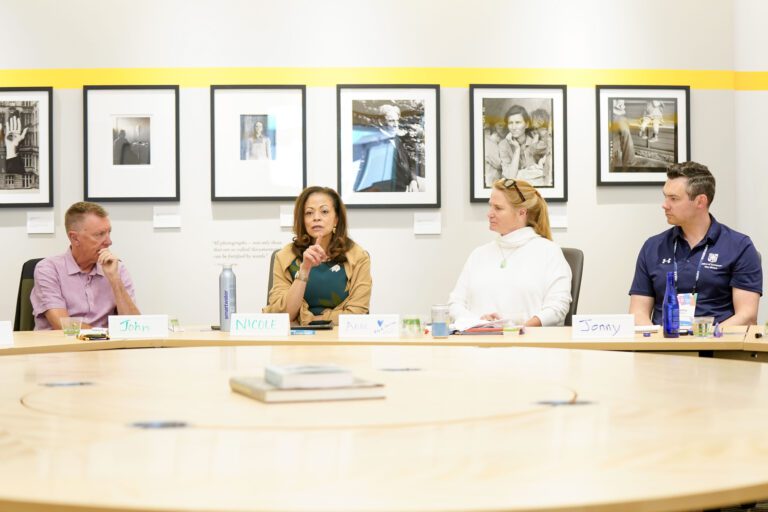Predicting a Child’s ACE Score…and Then What?
What would happen if we could predict a child’s Adverse Childhood Experiences (ACE) Score? Could we prevent a high ACE score? Can we as a society protect a child from long-term poor health outcomes? If we could develop a tool to predict ACE scores, how could we prevent that tool from further marginalizing populations that are already labeled “at risk”?
On a beautiful clear day in Aspen, these are the questions that we posed to the highly motivated and intellectually charged members of the Aspen Institute’s Ascend Network at the “Early Childhood, Health, and Beyond Forum” May 28-30. Our goal: To develop a tool that assesses a child’s risk for exposure to adverse childhood experiences (called a “predictive analytics tool”). The feedback we received was invaluable. They offered more questions and food for thought as we begin to grapple with our next phase of work around ACEs. However, even more important than developing the tool is providing guidance on what to do when we learn a child has the potential to have an ACE score of four or higher – the score that puts one at greater risk of having long-term poor health outcomes.
Adverse childhood experiences often result in social, emotional, and cognitive impairments. Children with severe emotional and behavioral disorders frequently have externalizing behaviors that can be misunderstood in child care and elementary school settings. The way our systems respond to these behaviors often ends up further marginalizing these children, commonly putting them on a pathway towards academic failure and continued societal sidelining. For parents with time, resources, and skills, the process can be frustrating and challenging, at best. For parents who are battling their own levels of toxic stress, with minimal financial and social resources, this additional stressor can be too overwhelming to manage. The long-term consequences of these systemic responses are far reaching and are part of the policies we need to carefully examine in our work.
ACEs are intergenerational, and it will take a two-generation approach to both change the trajectory of a parent’s high ACE score, as well as interrupt the cycle of impact on the child. The conversations during the Forum helped us think about the value of social networks and social capital, as well as the power of investing in parents and children together. Elaine Zimmerman, Executive Director of the Connecticut Commission on Children poignantly noted, “If we don’t bring parents together horizontally, we’re creating a service paradigm, rather than a civic paradigm.” The emphasis on engaging families – truly comprehending their barriers to access and understanding how current public policies can be utilized to sustain a two-generation approach – helped to broaden our understanding of how a predictive tool might be developed and used.
As we embark on the development of a predictive analytics tool to help us assess a child’s risk for adversity, we are mindful of integrating a two-generation approach to interrupt the cycle of social, emotional, and cognitive impairment that leads to poor family and societal outcomes. Ascend’s two-generation approach, with a focus on early childhood education, social capital, health and well-being, economic supports, and postsecondary and employment pathways, provides an integrated framework for our strategy in addressing some of our initial questions. Developing the tool to assess risk will serve as a solid outcome of our work; however, more meaningful outcomes will arise from the discourse and engagement of key stakeholders, most importantly parents, who can answer critical questions and offer direction on how we use this tool. Of special import will be providing guidance for child- and family-serving systems and organizations that might benefit from both using the tool, and integrating a two-generation framework that breaks the intergenerational cycle of adversity.
With 20 percent (63 million) of the U.S. population having adverse childhood experiences, we can’t afford as a society to ignore these issues any longer. At the Forum, we were asked, what does success look like? At a micro level – success is having a mom know her ACE score, so she is cognizant of the fact that her child’s future can be different than her past, and then supporting that mom to help her put the social and economic opportunities in place, so she can create a different future for her child. At a macro level – success is breaking down the silos that exist, so there can be greater innovation and integration among social and human service organizations. America can’t wait any longer. Our families deserve more. Our children deserve better, and our future depends on it.
Related Posts



